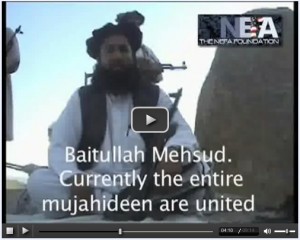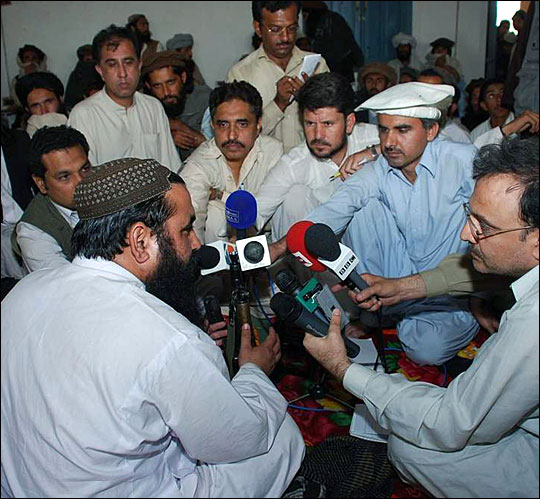Interview with Taliban Spokesman Maulvi Omar
BY Herschel SmithThe NEFA Foundation has recently released another video, this one an important interview of chief Taliban spokesman Maulvi Omar.

The entire interview is slightly over nine minutes, and is worth the time. Some excerpts are given below, with commentary by The Captain’s Journal.
Q: What is the difference between al Qaeda and the Taliban? Have they any relation?
A: There is no difference. The formation of the Taliban and al Qaeda was based on an ideology. Today, Taliban and al Qaeda have become an ideology. Whoever works in these organizations, they fight against kafir (infidel) cruelty. Both are fighting for the supremacy of Allah and his Kalma. However, those fighting in foreign countries are called al Qaeda, while those fighting in Afghanistan and Pakistan are called Taliban. In fact, both are the name of one ideology. The aim and objectives of both the organizations are the same.
The Captain’s Journal has discussed before what Nicholas Schmidle calls the Next-Gen Taliban. They have adopted suicide tactics, are more brutal in their dealings with the population, and have taken on a global perspective in lieu of the nationalistic ideological approach of ten or twenty years ago. In Khyber, they shout to passersby “We are Taliban! We are mujahedin! “We are al-Qaida!” There is no distinction.
Also as we have discussed before, the plot hatched within the Pakistan ISI to undercut Baitullah Mehsud failed within a week of being implemented. The Taliban are under the operational control of Mehsud, and his authority is unchallenged. Note the following words from Omar.
Thank God, among the tribal mujahideen there is unity for which they have rendered great sacrifices. Among them, there are important personalities like Maulana Fazlullah, Faqir Mohammad and Baitullah Mehsud. Currently, the entire mujahideen are united under the leadership of Baitullah Mehsud. This is a blessing of God. Though Baitullah is a young person, it is because of his sincerity, simplicity and piousness that all the tribals are under his command.
The interview continues with a very important question and a much more important answer.
Q: What is your view regarding jihad on the international level?
A: Jihad, as you know, is an important responsibility. Our Holy Prophet (PBUH) stated 1400 years ago that jihad would continue until doomsday. Jihad, which the Muslims of the subcontinent and Pashtuns have launched against the injustices and cruelty of anti-Islamic forces. If they had not committed cruelties, if they had not destroyed Iraq, there would be no fedayeen (suicide attackers). If they had not occupied Afghanistan, there would be no fedayeen. Similarly, if they had not attacked the tribal areas, particularly, Bajaur and Waziristan, there would have been no mujahideen and Taliban in such large numbers. This is also God’s will, who keeps jihad alive in different times.
The ongoing jihad against America and its allies is on one side. This has benefited Muslims as it has inculcated the importance of jihad in every Muslim heart. The anti-Muslim forces are on one side. They are under the name of allies. The Muslims are on the other side, under the name of jihadis. This decision has been taken by the Quran 1400 years ago (verses from the Holy Quran), which quoted God as saying when the anti-Muslim forces fight you collectively, you should also fight against them jointly.
In this war, Bush and Musharraf are standing in one row along with there allies, and in the other row Mullah Omar, the Mujahideen and their companions are standing. This will be the last war between Islam and Kafirs (infidels). This is a tough war because they (Mujahideen) do not have the support of any Muslim country in the world, nor any other Mujahideen. This ongoing jihad is harder than any other jihads, but there is still good news, as this will be and is the last war. And once the Muslims win this war, they can establish an Islamic government throughout the world.
In case one has any doubts about the evolution of the Taliban into a globally focused organization bent on the takeover of not only Pakistan and Afghanistan, but the balance of the world, Omar tells us once again what their ultimate aim is: the establishment of an Islamic government throughout the world.
These are sobering words, underscoring the need to avoid “negotiations” with them, and the corollary need to remove the threat, absolutely and completely.





